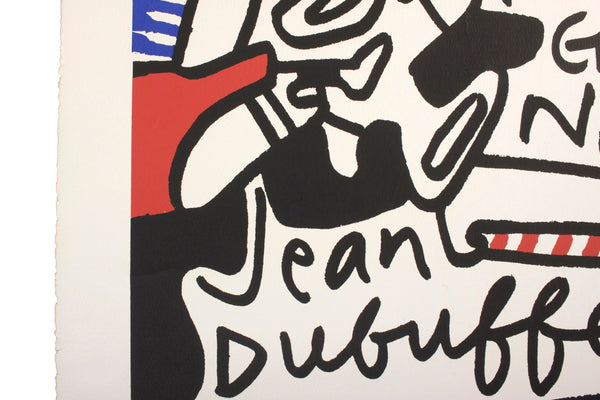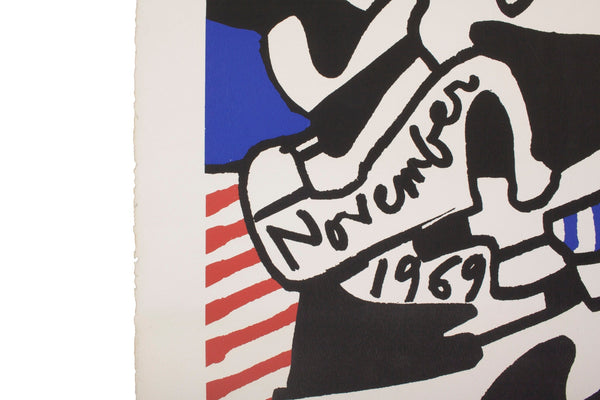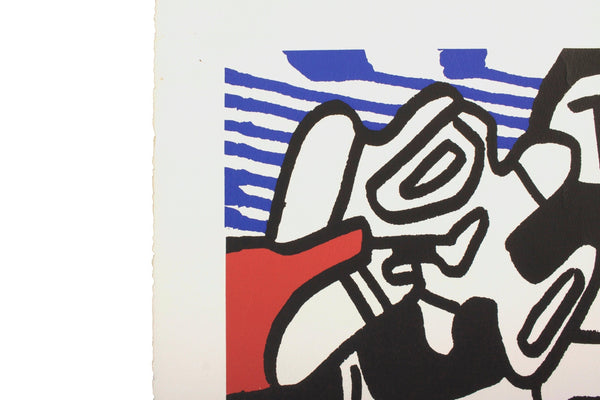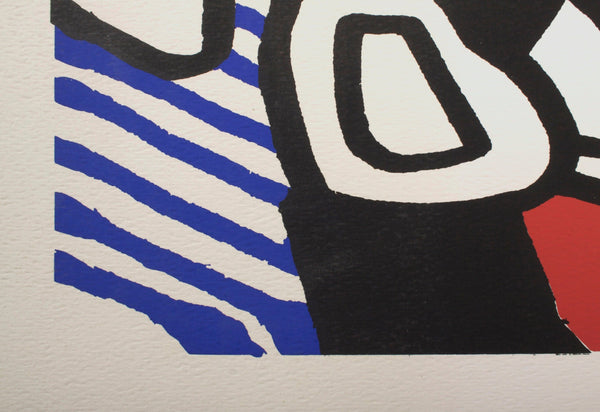Original Pop Art Lithograph Jean DuBuffet Print Simulacres Pace Gallery
Spectacular "Simulacres" original lithograph by Jean DuBuffet.
Printed November 1969, Pace Gallery New York, on a heavyweight artist paper.
This vintage Dubuffet lithograph is exceptional. The colors, tonality and details are rich, defined and the impression well inked.
This is an original lithograph and not a poster edition.
Unsigned
Unframed
MEASURES
Print 22.25" x 31"
The full sheet 26.25" x 40"
CONDITION
The colors are very vibrant with no fading. Crease on the outer margin noted at the top and also at the bottom of the sheet with a few areas of slight discoloration.
This item has been stored rolled up and will ship the same.
FREE domestic shipping!
SOME HISTORY
Jean Dubuffet was known for his inclination away from the stereotypical rules of fine art and his desire to trespass into the unknown. His subjects often included everyday Parisians and his materials were often unconventional.
Dubuffet was well received in America, partially due to the exposure that he gained from being included in Pierre Matisse’s shows. Exhibiting alongside greats such as Picasso and Braque, Dubuffet made his mark on the American art scene.
Jean Dubuffet’s work is marked by a rebellious attitude toward prevailing notions of high culture, beauty, and good taste. He began making art in earnest at age 41, after a stint in the army and a successful career as a wine merchant. The next four decades were tremendously prolific: he wrote poetry and theoretical texts, played jazz, experimented widely with art-making materials and techniques, and worked in many mediums, including painting, drawing, printmaking, large-scale outdoor sculpture, and what he called “animated painting”—works bridging painting, sculpture, dance, and theater, and featuring live performers.
Though he was an academically trained painter from a bourgeois family, Dubuffet maintained what he called in a 1951 lecture an “anticultural position.”1 He advocated for “instinct, passion, mood, violence, madness”2 rather than analysis and reason, as well as closer proximity to nature and natural forms and the discarding of traditional notions of beauty. “Look at what lies at your feet!” he once said. “A crack in the ground, sparkling gravel, a tuft of grass, some crushed debris offer equally worthy subjects for your applause and admiration.”3 Such values were embodied in what Dubuffet termed art brut (or “raw art”), produced on the margins by children, outsider and folk artists, and the mentally ill. His own collection of this work, formed in part with the help of the Surrealist Andre Breton and writer Jean Paulhan, was donated to the city of Lausanne, Switzerland, in 1971.
In the studio, Dubuffet was a relentless innovator, experimenting with unorthodox tools and materials by mixing gravel into his paints; making impressions from foliage, orange peels, and tapioca; or covering canvases with tin foil, as in Soul of the Underground. He worked fluidly between mediums, with his trials in painting informing his radical work in the print shop, where he attacked lithographic stones with sandpaper, flaming rags, and chemicals. He carefully inked webs onto paper and then translated them into allover horizon-less compositions on canvas, creating views that suggest both the microscopic and the celestial. His printmaking reached its zenith with Phenomena, a group of 362 lithographs parsed into 24 albums, which evoke myriad natural states, textures, and surfaces.













